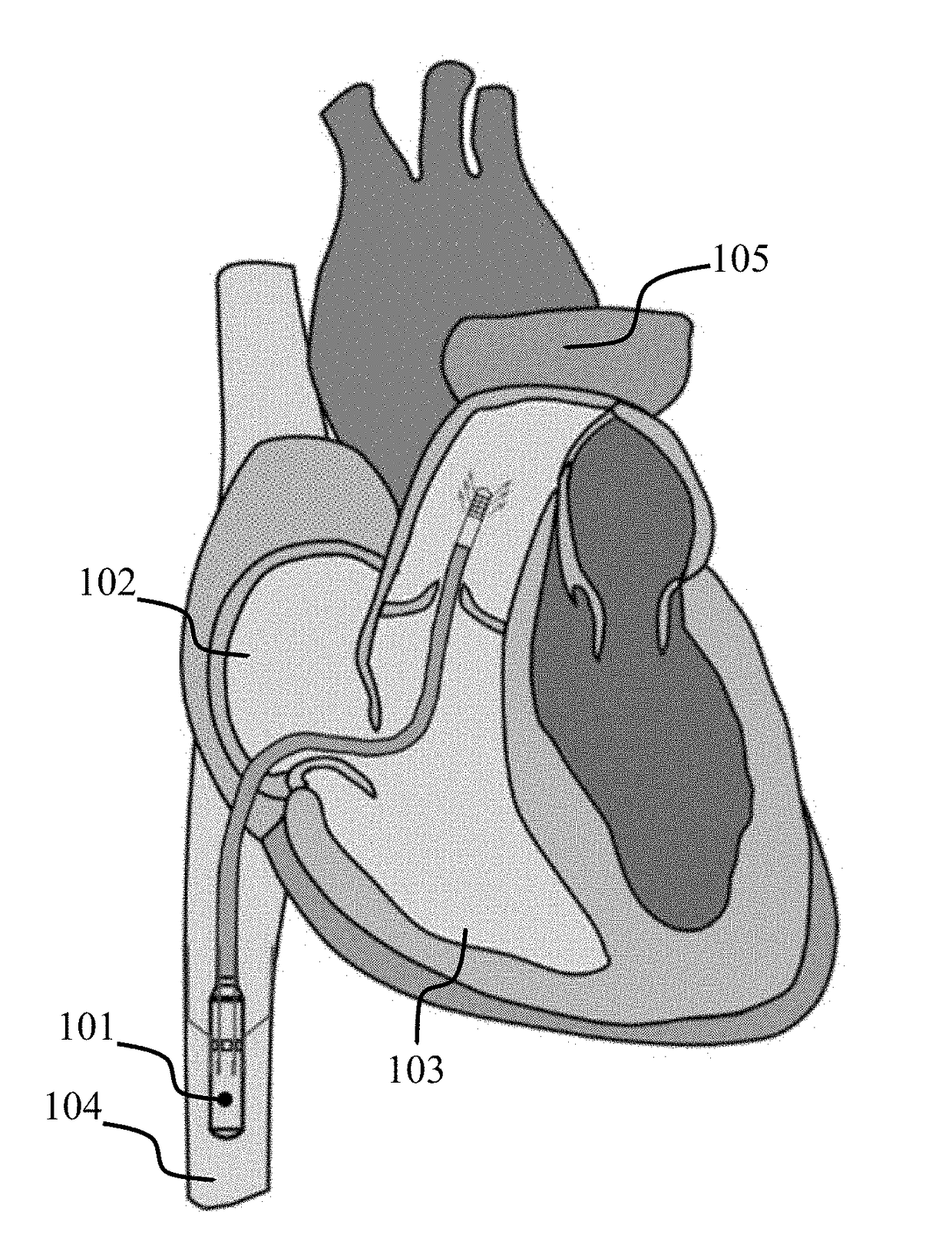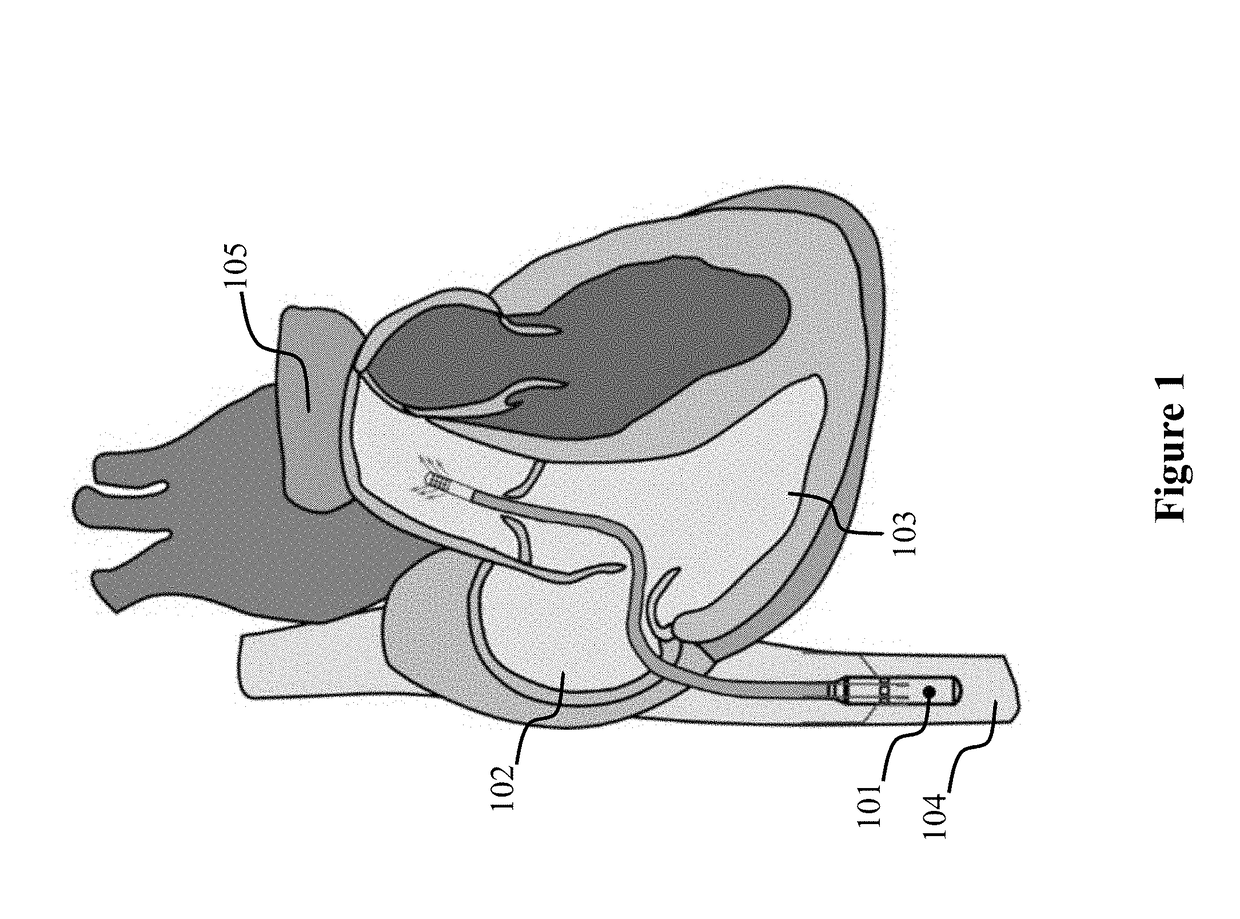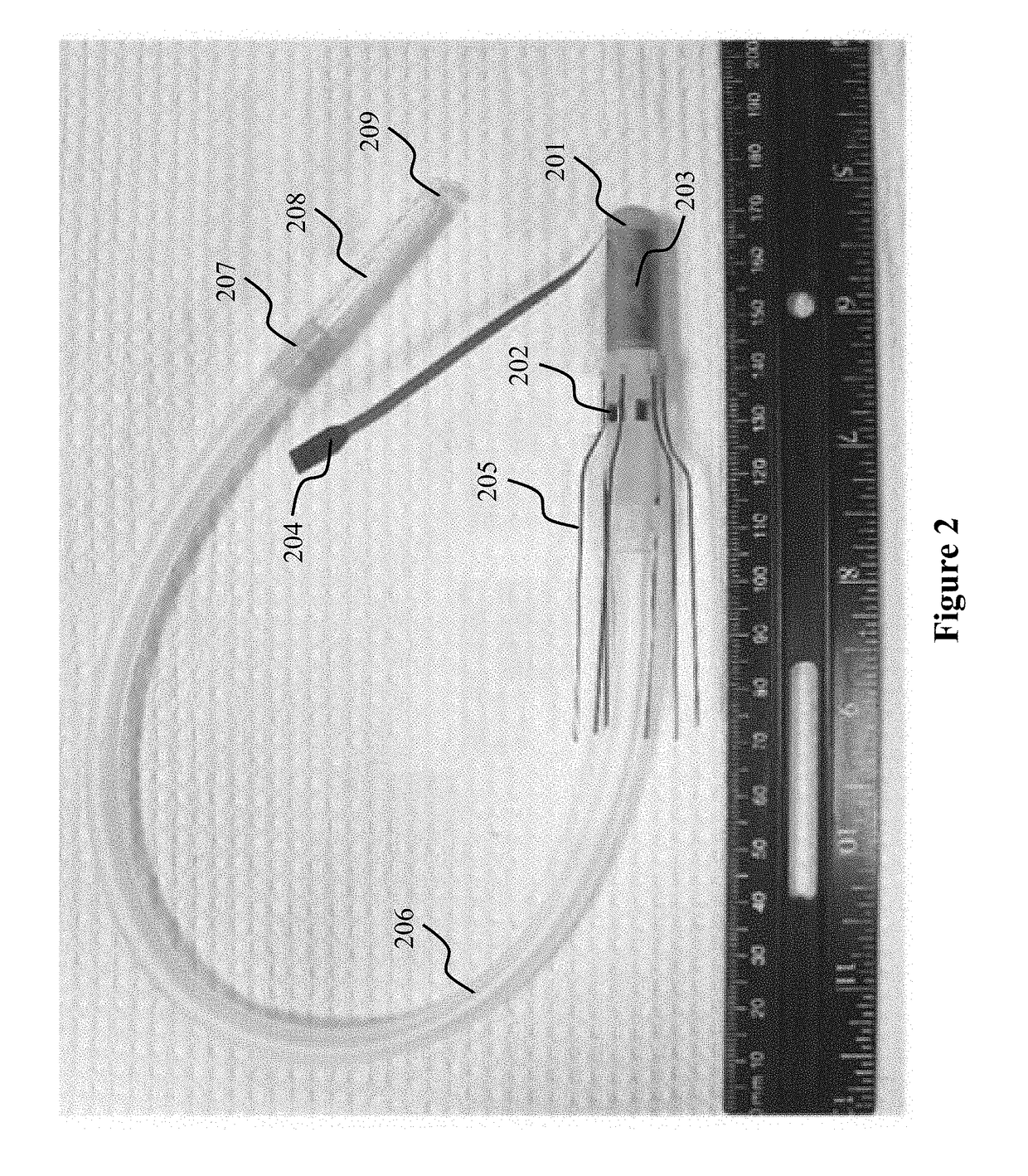Cavo-arterial pump
a technology of cavo and valve, applied in the field of cavo valve, can solve the problems of limited the effectiveness of mechanical circulatory support therapy in heart failure patients, limited the effectiveness of mcs therapy, and the development of right ventricular assist devices (rvads) has lagged significantly compared to lvad technology
- Summary
- Abstract
- Description
- Claims
- Application Information
AI Technical Summary
Benefits of technology
Problems solved by technology
Method used
Image
Examples
experimental examples
[0051]The invention is further described in detail by reference to the following experimental examples. These examples are provided for purposes of illustration only, and are not intended to be limiting unless otherwise specified. Thus, the invention should in no way be construed as being limited to the following examples, but rather, should be construed to encompass any and all variations which become evident as a result of the teaching provided herein.
[0052]Without further description, it is believed that one of ordinary skill in the art can, using the preceding description and the following illustrative examples, make and utilize the present invention and practice the claimed methods. The following working examples therefore, specifically point out the preferred embodiments of the present invention, and are not to be construed as limiting in any way the remainder of the disclosure.
example 1
n and Fabrication
[0053]The intravascular pump designed is intended to provide partial circulatory support (2.5-3 L / min) to patients with LVAD-induced right ventricular dysfunction. The intravascular pump 101, which is called the cavo-arterial pump (CAP), would sit in the inferior vena cava 104 and propel venous blood to the main pulmonary artery 105 (FIG. 1). Preliminary sizing of the pump impeller and speed of operation were determined by a combination of fabrication tolerances and the general design criteria for turbomachinery (Stepanoff, Centrifugal and Axial Flow Pumps: Theory, Design, and Application. Krieger Publishing Company; 1957). In this design iteration, the CAP was designed to produce 2.5 L / min against at 30 mm Hg pressure head for right ventricular support. The impeller diameter was set to 7.5 mm. The specific work of this pump was calculated using:
y=ΔPρ(Equation1)
where y is the specific work, ΔP is the pressure head across the pump, and p is the density of blood. The ...
example 2
ive CAP
[0062]The direct drive CAP was tested on a bench-top flow loop to test the performance. The flow loop, shown in FIG. 5, consists of a reservoir 501, flexible tubing 502, and a submersion tank 503 for pump 504. Reusable blood pressure transducers 505 and 506, MLT0380, (AD Instruments, Dunedin, New Zealand) were used to measure the tank pressure and pump outlet pressure. An ultrasonic flow sensor, ME8PXL, and flow meter 507, TS410 (Transonic Systems Inc., Ithaca, N.Y., USA) were used to measure the pump flow rate. A gate valve located at the pump outlet was used to modulate the outlet resistance and increase afterload. Motor shaft speed was set with a sensorless motor drive (S48V5A, Koford Engineering LLC., Winchester, Ohio, USA) and external potentiometer. Two different working fluids were used. The first was water and the second was a 40% by volume glycerol and 60% by volume water solution to mimic the viscosity of blood. Viscosity was not specifically measured in these exper...
PUM
 Login to View More
Login to View More Abstract
Description
Claims
Application Information
 Login to View More
Login to View More - R&D
- Intellectual Property
- Life Sciences
- Materials
- Tech Scout
- Unparalleled Data Quality
- Higher Quality Content
- 60% Fewer Hallucinations
Browse by: Latest US Patents, China's latest patents, Technical Efficacy Thesaurus, Application Domain, Technology Topic, Popular Technical Reports.
© 2025 PatSnap. All rights reserved.Legal|Privacy policy|Modern Slavery Act Transparency Statement|Sitemap|About US| Contact US: help@patsnap.com



